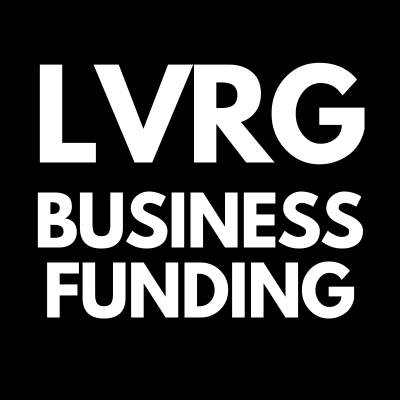Small Business Owner's Simplified Guide to Cash Flow 2024
Cash flow is a crucial aspect of every business, representing the movement of money in and out of the company. It encompasses the inflow of revenue from sales, investments, and financing, as well as the outflow of expenses that include operating costs, taxes, and loan payments.
What It Does
Cash flow is a vital indicator of a company's financial health and stability. It directly impacts a business's ability to meet its financial obligations, invest in growth opportunities, and cover unexpected expenses. Positive cash flow is essential for conducting day-to-day operations, paying employees, and satisfying creditors and suppliers.
Why It's Important
Monitoring and managing cash flow is essential for several reasons:
1. Solvency: Healthy cash flow ensures that a business has enough liquidity to honor its financial commitments, thereby avoiding insolvency.
2. Investment and Growth: Positive cash flow allows companies to invest in research, development, and expansion, driving growth and innovation.
3. Financial Stability: It provides a cushion against market fluctuations, economic downturns, and unforeseen circumstances.
4. Credibility: Demonstrating strong cash flow enhances a company's credibility with lenders, investors, and suppliers.
Understanding and maintaining healthy cash flow is critical for sustained business operations and future growth. It requires careful planning, diligent monitoring, and proactive management to ensure a company's stability and success.
As a small business owner, managing cash flow effectively is crucial for the success and sustainability of your enterprise. Proper cash flow management ensures that you have enough funds to cover your expenses, invest in growth opportunities, and weather unforeseen challenges.
Here are several essential tips to help you effectively manage your small business's cash flow.
1. Maintain Accurate Cash Flow Projections
Create regular cash flow projections to forecast the amount of cash coming in and going out of your business. These projections will help you anticipate periods of surplus and potential shortfalls, allowing you to make informed decisions about spending, saving, and financing.
2. Monitor and Analyze Expenses
Keep a close eye on your business expenses and identify areas where you can reduce costs without sacrificing quality. Negotiate with vendors, consider alternative suppliers, and regularly review all recurring expenses to ensure they are necessary for your operations.
3. Institute Strict Invoicing and Collections Processes
Implement a systematic approach to invoicing and collections to shorten the time between providing your services or delivering your products and receiving payments. Offer incentives for early payment and promptly follow up on overdue invoices to maintain a healthy cash flow.
4. Build and Maintain Strong Relationships with Suppliers
Negotiate favorable payment terms with your suppliers to extend the time before payments are due without incurring penalties. This approach can provide your business with additional breathing room to manage cash flow effectively.
5. Consider Financing Options
Explore financing options from LVRG such as SBA loans, cash flow financing, working capital loans, merchant cash advances, or business lines of credit as means to bridge cash flow gaps during challenging periods or to fund strategic growth initiatives.
6. Regularly Review and Adjust Your Pricing Strategy
Periodically review your pricing strategy to ensure that it aligns with your business's financial goals. Adjust your prices to reflect changes in costs, market conditions, and the value you provide to your customers.
7. Build a Cash Reserve
Set aside a portion of your profits to build a cash reserve that can serve as a buffer during lean times or be used to capitalize on opportunities for expansion. Having a financial cushion can significantly reduce the impact of unexpected cash flow disruptions.
8. Invest in Technology and Automation
Leverage accounting software and financial management tools to streamline your cash flow management processes. Automation can help reduce errors, save time, and provide valuable insights to make better-informed financial decisions.
By implementing these strategies and maintaining a proactive approach to cash flow management, small business owners can increase their financial stability, improve their planning capabilities, and position their businesses for long-term success. Remember, effective cash flow management is an ongoing process that requires vigilance, adaptability, and a thorough understanding of your business's financial dynamics.
Understanding the Difference: Cash Flow vs. Profit
It's crucial for businesses to distinguish between cash flow and profit, as these are distinct financial metrics that provide different insights into a company's financial health.
Cash Flow:
Cash flow refers to the movement of money in and out of a business. Positive cash flow indicates that the business is receiving more money than it is spending, which is essential for meeting short-term obligations such as paying bills, repaying loans, and purchasing inventory. Conversely, negative cash flow can signal financial instability and challenges in meeting financial obligations.
Profit:
Profit, on the other hand, is the surplus that remains after deducting expenses from revenue. While profit is a key indicator of long-term sustainability and success, it does not necessarily reflect the actual cash available for immediate use. For example, a business may generate substantial profits on paper but experience cash flow shortages due to delayed customer payments or heavy investments in inventory or equipment.
Importance of Managing Both:
Understanding the difference between cash flow and profit is essential for effective financial management. A business can be profitable but still encounter cash flow problems if it fails to effectively manage inflows and outflows. Conversely, a healthy cash flow doesn't guarantee long-term success if the business is consistently operating at a loss.
By comprehending the distinction between cash flow and profit, businesses can make informed decisions regarding budgeting, financing, and investment strategies. Effective management of both cash flow and profitability is essential for ensuring the financial stability and growth of a business.
Understanding the Difference: Cash Flow vs. Working Capital
Cash flow and working capital are two distinct yet interconnected financial concepts. It’s crucial to distinguish between the two, as they serve different purposes in assessing a company's financial health and sustainability.
Cash Flow:
Cash flow refers to the movement of money into and out of a business during a specific period. It encompasses the inflow of revenue from sales, investment, or financing, as well as the outflow of expenses such as operating costs, loan payments, and taxes. Positive cash flow indicates that a company is receiving more money than it's spending, providing liquidity for day-to-day operations and financial obligations. Conversely, negative cash flow can signal financial distress and the potential inability to meet immediate obligations.
Working Capital:
Working capital, on the other hand, represents the funds available for a company's daily operations. It is calculated by deducting current liabilities from current assets. Current assets include cash, accounts receivable, and inventory, while current liabilities comprise short-term debts and payables. Adequate working capital ensures that a business can cover its short-term expenses and maintain its operational efficiency. Insufficient working capital may lead to difficulties in paying creditors, managing inventory, and meeting other short-term obligations.
Differentiating Cash Flow and Working Capital:
While both cash flow and working capital are vital indicators of a company's financial position, it's important to recognize that cash flow doesn't equate to working capital. A business can have positive cash flow but still experience working capital challenges if its current liabilities outweigh current assets over the short term. Conversely, a company could maintain healthy working capital but face negative cash flow due to delayed customer payments or significant capital expenditures.
The Impact on Financing:
Understanding the distinction between cash flow and working capital is crucial for businesses seeking financing. While strong cash flow demonstrates the ability to generate revenue and manage expenses, lenders also scrutinize working capital to gauge a company's short-term solvency and resilience. Maintaining a balance between positive cash flow and sufficient working capital is essential for sustaining operations and seizing growth opportunities.
While cash flow and working capital are interlinked elements of a company's financial landscape, they serve distinct purposes. Recognizing their disparities and leveraging them effectively is essential for making informed financial decisions and ensuring the stability and longevity of a business. By delineating the disparities and implications of cash flow and working capital, businesses can cultivate a comprehensive understanding of their financial dynamics, fostering informed decision-making and sustainable growth.
The Importance of Managing Cash Flow for Your Business
Cash flow is the lifeblood of any business. It can make or break a company, regardless of its size or industry. Effective cash flow management is crucial to ensure smooth operations, meet financial obligations, and seize growth opportunities. Here are key reasons why businesses should pay close attention to and manage their cash flow:
1. Liquidity and Financial Stability
Sufficient cash flow allows businesses to cover day-to-day operational expenses, such as payroll, rent, utilities, and inventory purchases. By managing cash flow properly, businesses can maintain liquidity and financial stability, avoiding cash shortages that could lead to missed payments or even insolvency.
2. Managing Debt and Interest Payments
A healthy cash flow enables businesses to manage their debts effectively. With consistent positive cash flow, companies can make timely payments on loans, credit lines, and other financial obligations, reducing the risk of incurring high interest costs, penalties, or damaging their credit rating.
3. Investing in Growth and Innovation
Positive cash flow provides businesses with the financial resources to invest in growth initiatives, research and development, and innovation. Whether it is expanding operations, launching new products, or upgrading technology, effective cash flow management ensures that businesses have the necessary funds to pursue growth opportunities.
4. Weathering Economic Downturns
Adequate cash reserves built through effective cash flow management can help businesses weather economic downturns, unexpected expenses, or market volatility. These reserves act as a cushion, allowing businesses to maintain stability and continue operations when faced with challenging economic conditions.
5. Building Investor and Creditor Confidence
Well-managed cash flow demonstrates financial discipline and responsibility, which can instill confidence in investors, creditors, and other stakeholders. It signals that the business has control over its finances and is better positioned to honor its commitments, making it more attractive for potential investment and financing opportunities.
In conclusion, cash flow is a critical aspect of business management. It is imperative for business owners and managers to actively monitor and manage cash flow to ensure the financial health and sustainability of their enterprises. By understanding the importance of cash flow and implementing effective cash flow management strategies, businesses can mitigate financial risks, foster growth, and enhance their overall resilience in the marketplace.
Written by Charles M. Barr, CEO of LVRG Business Funding

